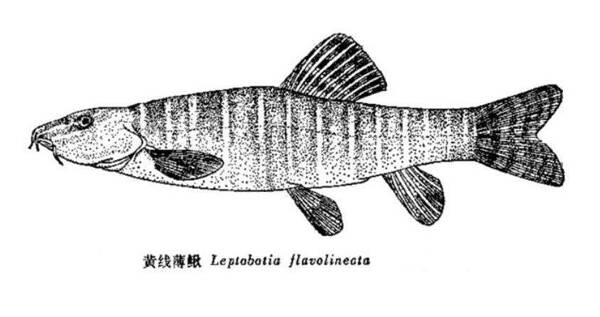The yellow-lined loach (scientific name: Leptobotia flavolineata) is a species of the genus Leptobotia, family Cypriniformes, class Actinopterygii, and is endemic to China.

The yellow-lined loach looks very similar to the garfish, but the larger ones are much larger than the garfish. People in Shidu call it "biangan (whip pole)", people in Miyun call it "bian blind man", and people in the Northeast call it "ox tail".
Yellow-lined loach is a bottom fish that likes to live in the cracks between gravels in mountain streams where the water flows slowly. It often gathers in groups between gravels or in the cracks of rocks at the bottom of the water.
It is listed in the second level of the "List of National Key Protected Wildlife in China".
Protect wild animals and eliminate game.
Maintaining ecological balance is everyone's responsibility!